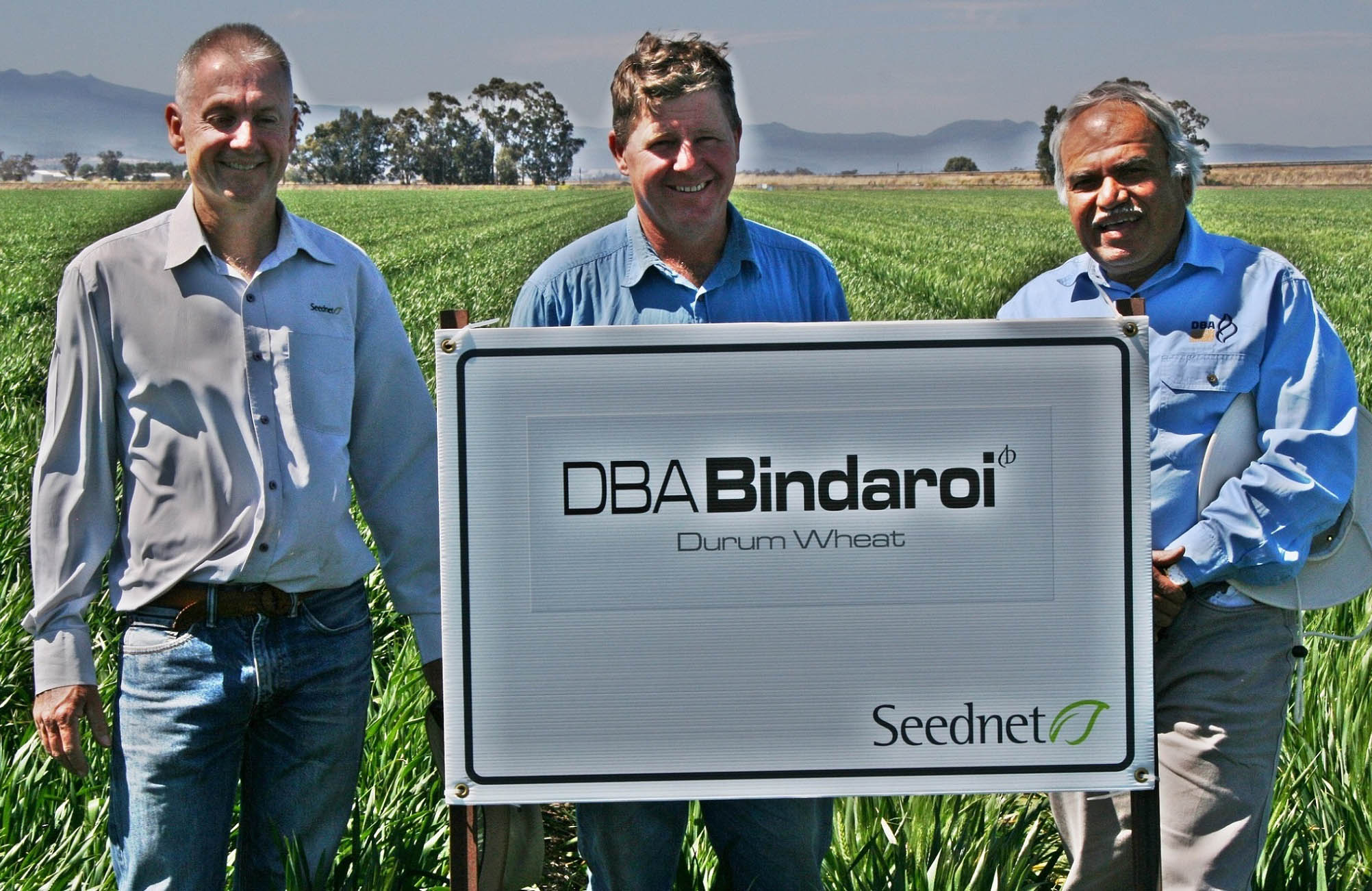
Despite tough seasonal conditions in 2019, durum wheat variety DBA Bindaroi performed very well to produce high quality, good yields, with no significant incidence of disease seen.
DBA Bindaroi was released for commercial production as a high yielding durum variety for dryland durum production in NSW and Queensland.
NSW Department of Primary Industries (DPI) Durum Breeder, Dr Gururaj Kadkol, said the 2019 season was very tough as only some parts of northern NSW received rain in early May, then from July conditions turned dry and stayed dry until harvest.
"This was the second year of drought since the release of the variety, yet the few DBA Bindaroi crops that were planted, produced good yields and high grain quality.
"To achieve the highest quality grade, DR1, durum grain needs to meet specifications for protein content of 13 per cent or above, a minimum of 80 per cent of hard vitreous kernels, and screenings below 5 per cent.
Boggabri grower, Andrew Watson, normally grows durum on a five-year rotation at his property, 'Merriendi' and he planted DBA Bindaroi in late May with 30 kilograms of nitrogen fertiliser per hectare, on long fallow after cotton, and produced 1.9 t/ha.
Mr Watson also planted DBA Bindaroi on other fairly average paddocks, making the overall average yield for the farm at just over 1 t/ha, screenings at 1.3-2.7 per cent and protein above 13 per cent. The entire crop was classed DR1.
Mr Watson said the crop looked quite good considering the tough seasonal conditions.
"We had no significant in-crop rain, but produced a high-quality crop with very low screenings, the figures speak for themselves," Mr Watson said.
"I am also impressed because we didn't notice any crown rot damage."
Narrabri grower, Tony Dampney, grew DBA Bindaroi at 'Mirrabooka' in demonstration strips under irrigation following cotton from the previous year.
Mr Dampney said the trial was planted in early June and watered up, with follow-up watering in August, September and October. We applied 130 kilograms of nitrogen in March and again in August and 60 kilograms MESZ fertiliser at planting.
"All three varieties looked good as they were growing and setting grain, but I was totally surprised by the yield data from the strips showing DBA Bindaroi yielding 8.96 tonnes per hectare, a clear two tonnes more than Caparoi yield of 6.95 t/ha and DBA Vittaroi at 8.67 t/ha.
"All varieties had low screenings, in excess of 14 per cent protein and were DR1 in quality. With the dry seasonal conditions there was no lodging observed in any of the three varieties."
Mr Doug Cush, owner of Bellata Gold and a long-standing durum grower in Bellata has picked DBA Bindaroi as the main variety for his farm and durum milling operation for the 2020/21 season.
Mr Cush said he was seeking a variety that yields better than DBA Lillaroi, but has the same colour and pasta making quality.
"All the information to date confirmed DBA Bindaroi as the best choice," Mr Cush said.
"The improvement in the colour of semolina and dry pasta with these recent varieties has lifted the quality of durum produced in northern NSW and it has opened some new market opportunities for my company."
Dr Kadkol said DBA Bindaroi was rated "SVS" (susceptible to very susceptible) for crown rot resistance for the 2018 and 2019 seasons.
"While this crown rot ratings is an improvement over the older durum varieties, the level of resistance is still lower than bread wheats.
"Therefore, growers still need to exercise due care in following good rotations and selecting paddocks with low crown rot inoculum using the PREDICTA®B tests." Dr Kadkol said.
DBA Bindaroi is rated RMR for the stripe rust races in northern NSW and it has high levels of resistance to leaf and stem rusts. However, a new race of stripe rust has been detected in southern NSW and Victoria to which DBA Bindaroi is rated "MS".
DBA Bindaroi seed is available through Seednet.






